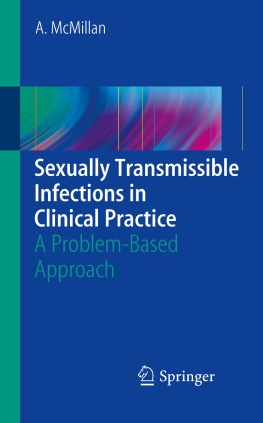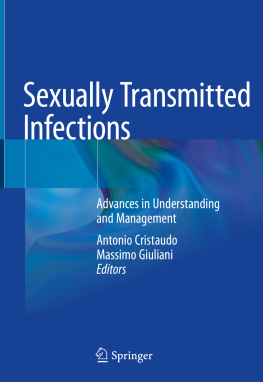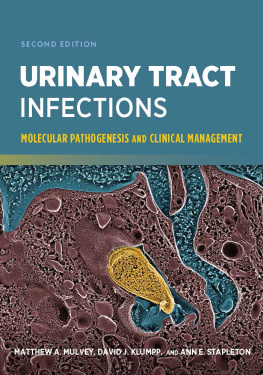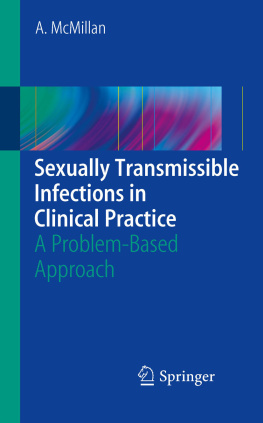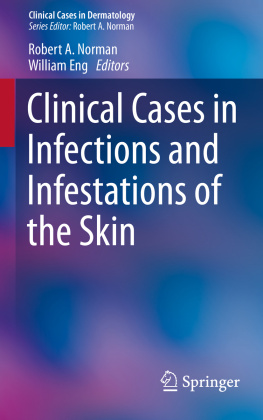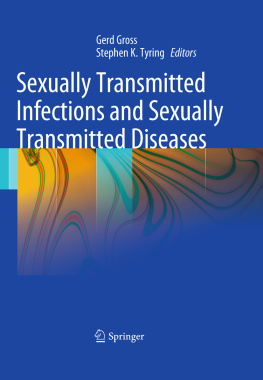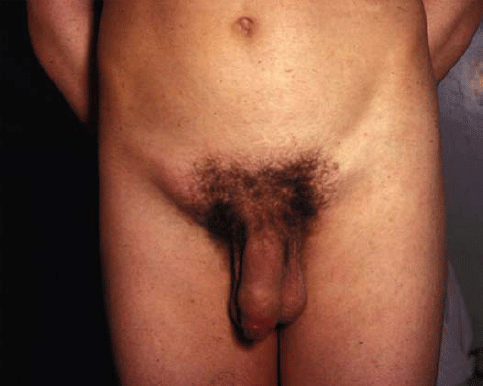Section A
SECTION - A
Springer-Verlag London 2009
Alexander McMillan Sexually Transmissible Infections in Clinical Practice
1. A Man Requesting a Sexual Health Screen
Alexander McMillan 1, 2
(1)
Department of Genitourinary Medicine, NHS Lothian, Edinburgh Royal Infirmary, Edinburgh, UK
(2)
University of Edinburgh, Edinburgh, UK
Alexander McMillan Formerly, Consultant Physician, part-time Senior Lecturer
Email:
Robert, a 23-year-old student, attends a Sexual Health clinic and requests testing for sexually transmissible infections (STIs).
1.1 What History Would You Obtain from Robert?
A specific history should be taken to elicit any symptoms that the individual may not have recognized as being those of a sexually transmissible infection (STI). (It is usually helpful to elicit this history before enquiring about sexual activity: it helps to establish rapport with the patient before questioning about intimate activities). For example,
Figure 1.1.
Bilateral inguinal lymph node enlargement in primary syphilis.
The taking of an accurate sexual history is important so that the most appropriate microbiological tests can be undertaken and the need for any subsequent investigations. The following information should be obtained:
The date of his most recent sexual contact, and, if penetrative sex had been performed, were condoms used? (Remember the pre-patent periods of the STIs, e.g., gonococcal urethritis between 1 and 10 days and chlamydial urethritis 721 days. Note : Testing for STIs in the symptomless patient is generally deferred until 710 days after the most recent sexual risk.)
Does he have a regular sexual partner, and, if so, for how long have they been in the relationship, and when did he last have sex with his partner? (Remember that one persons definition of regular may differ significantly from that of another!)
If he has had sexual contact within the preceding 3 months:
How many different partners has he had?
What were the approximate dates of these sexual contacts? Again this is a relevant question with respect to the pre-patent periods of the infections.
What was the gender of these partners? Remember that a sizeable proportion of men who are predominantly heterosexual have had homosexual contact. If he has had homosexual contact, it is helpful to enquire about what sexual activities had occurred (see ). This will inform on possible risks of infection with, for example, HIV and syphilis.
How many lifetime sexual partners has he had:
What was the gender of his partners?
Has he always used condoms for vaginal, anal, or oralgenital sex? Consistent use of condoms reduces the risk of infection with some, but not all, STIs. Examples of the former include gonorrhoea, chlamydia, and syphilis, and an example of the latter, human papillomavirus.
What was the country (countries) of origin of his sexual partner(s)? This is particularly important when considering the risk of infection with HIV, hepatitis B virus, and syphilis, conditions that are more prevalent in geographical areas outwith Western Europe, Australasia, and the United States of America.
Has he had any STI in the past, and if so what, and when? This history is particularly important in the interpretation of positive serological tests for syphilis (see ).
Has he ever been tested for HIV, and if so when, and what was the result?
Has he or any of his sexual partners ever injected recreational drugs? If so, it is important to note when that (these) risk(s) occurred because of the often long pre-patent period before serological tests for the blood-borne viruses become positive.
Has he had any serious medical conditions in the past, and what is the current state of his general health?
Is he currently receiving medication, and if so what? This is important to know because of possible drug interactions with any drugs used for the treatment of STIs.
Has he taken any antimicrobial drugs within the preceding month? Such therapy may have inadvertently treated an STI.
Has he ever had a hypersensitivity reaction to drugs, particularly to antimicrobial agents?
Robert has no symptoms suggestive of the presence of an STI. The reason for his clinic attendance is that he has met a young woman with whom he wishes to form a relationship, and does not wish to infect her with an STI of which he is unaware. His most recent sexual contact had been 3 weeks previously with an ex-girlfriend, with whom he had been in a relationship for 3 months. He used a condom for vaginal intercourse but not for oro-genital sex. He has had no other sexual contacts in the preceding 3 months. Each of his six lifetime sexual partners was female, and there is no history of homosexual contact. Each partner was from the United Kingdom. Although he is aware of the risk of acquisition of STI from unprotected sex, he has not used condoms consistently. He has smoked cannabis in the past, but has never injected recreational drugs. He is not aware of injecting drug use by any of his sexual partners. His general health is good, and he is not currently receiving any medication. There is no history of antimicrobial drug use in the preceding month. He has no known drug allergies. He has not been vaccinated against either hepatitis A or B.
1.2 Outline the Physical Examination You Would Perform and Indicate Which Microbiological Tests You Would Undertake in This Case
The extent of the physical examination will be determined by the history. As Robert has no history of a rash or swollen lymph nodes, it is reasonable to confine the physical examination to the anogenital area. This examination is best performed with the patient lying on a couch in a warm and well-lit room. He should be offered a chaperone with whose gender he feels comfortable.
As up to 90% of men with uncomplicated chlamydial infection are symptomless, it is imperative that at least this infection is specifically looked for when a patient requests an STI screen. As gonococcal infection of the urethra is symptomless in up to 5% of cases, tests for Neisseria gonorrhoeae should be undertaken. Untreated, both infections have serious sequelae (see ).

